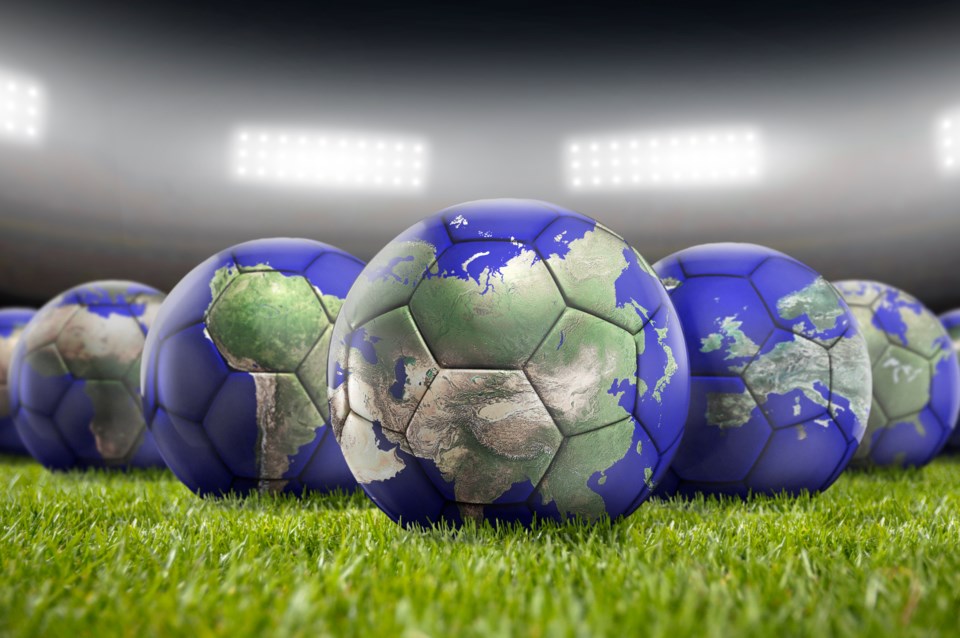Many major sports gatherings have been rocked by extreme weather events in recent years. A during the 2019 Rugby World Cup in Japan. because of bush fires. further north to escape the oppressive heat in Tokyo. And the situation is similar for the .
The soccer world won’t be spared.
Beginning on Nov. 20, the best national teams, , will gather in Qatar to compete in the 22th edition of the soccer World Cup. For the first time in its history, the event – which has been the target of – will be held at the end of autumn due to the high temperatures that affect the country during the summer, and which could affect the health of spectators and athletes.
Will there still be a soccer World Cup in 2100? What impact is pollution having on player performance? Will we have to choose between our love of soccer and the fight against climate change?
As researchers in physical activity sciences, we are proposing to shed some light on the impacts of climate change on the future of soccer.
Soccer: Victim of, or contributor to climate change?
The combination of historical data and current emission scenarios reveals that rising sea levels, intensified heat waves, increased risk of , floods and deteriorating air quality . However, soccer is not just a victim of climate change. It is also a significant contributor to it, as demonstrated by the – and that is just for the travel entailed.
This is nearly three times the annual carbon footprint of UK citizens, and far exceeds the , set to meet the commitments of the Paris Agreement (COP21).
Heat, weather and flooding: What are the impacts on the practice?
In the short term, the concerns are mainly about , which could . Some sports associations such as or in Canada have already established safety thresholds to regulate holding events and .
Since it is estimated that these conditions will become more frequent in the near future (the on more than 50 days per year in several Canadian cities, including Montreal and Toronto, by 2050-2080), it is possible to estimate a greater number of postponements and cancellations of practices and games. There is also the potential impact of fires on infrastructure and the deterioration of natural grass fields due to drought and summer watering restrictions. These fields could also be affected by increasingly harsh winter conditions.
A 2013 study in England already reported a . In the longer term, rising oceans and more frequent flooding are likely to pose a temporary or permanent threat to clubs’ operations, jeopardizing the future of soccer in some parts of the world if greenhouse gas emissions .
According to a report based on modelling, by 2016 the . Such events have already occurred in and , rendering the grounds unusable for several months.
In some contexts, synthetic fields offer an interesting alternative when a natural field is unavailable or too degraded; moreover, they can be used over a longer period of the year. However, data show that these fields are prone to create heat islands, with a . This level of temperature increases the heat stress experienced by athletes and, therefore, augments risks to their health and performance. The same is true for the health of referees, coaches and audience members.
Impacts on player health and performance
Air pollution negatively impacts the , of professional players. Peak pollution could even drastically reduce the number of goals scored during games.
There is empirical evidence observed for several decades that the . In a polluted city, this increase is . Why? Because the host team is used to a higher average air pollution, and therefore its performance is less affected.
Heat and dehydration can also affect the performance of the athletes and, consequently, the quality of the games and the show offered. Yet, that the quality of play was not affected by the oppressive heat. However, these results should be interpreted cautiously, as .
So, it is possible that amateur athletes, or older players with specific health conditions will experience more adverse health and effects on their performance.
Urgent need for change: From reactive to proactive
, including through climate change mitigation and adaptation strategies.
The Fédération Internationale de Football Association (FIFA) was one of the first international sports federations to commit to the , by developing . Concretely, FIFA has established several initiatives that revolve around three main objectives: 1) making soccer ready for climate action; 2) protecting iconic tournaments from the negative impacts of climate change; and 3) ensuring the development of resilient soccer.
In the wake of this, in order to mitigate the impacts of climate change on its operations, the soccer world will very quickly have to move from a reactive to a proactive approach, by putting actions in place:
-
;
-
to reduce travel for athletes and fans by requiring national professional leagues to recommend for short trips;
-
Encouraging for fans and amateur athletes;
-
Reducing the vulnerability of players and spectators by adapting regulations and activities: More frequent training breaks, possibility of making more changes during games, revision of the rules concerning the duration of games in case of a tie, moving games to cooler times of the day.
Since soccer is not the only sport that is both a victim of, and an actor in climate change, urgent action by the sporting community as a whole is needed to continue to play safely and enjoyably.


